
Tel :18138443506
Phone :13798439478
Email :mammon.xu@zhixin-cert.com
Addr :Floor 3, No. 5, Shanglian New Village, Shangcun Community, Gongming Street, Guangming District, Shenzhen (Chuangxin Office Building)
PSE certification
Introduction to Certification
PSE certification (Product Safety of Electrical Appliance&Materials) is a market access system for electronic and electrical products implemented by the Japanese government, and an important part of Japan's Electrical Product Safety Law (DENAN). On April 1, 2001, Japan revised the electrical safety law, which is managed by METI (Japan's Ministry of Economy and Industry). METI does not directly issue certificates, but authorizes third-party certification bodies to conduct product compliance assessment tests and issue certificates.
METI authorizes Japan Electric Safety and Environmental Technology Research Laboratory (JET) and Japan Quality Assessment Agency (JQA), as qualification certification bodies (CABs), to be responsible for testing and certification of electronic and electrical products and market supervision according to regulations. In addition, TUV, UL, CQC and other institutions are also qualification certification institutions.
According to the requirements of the regulations, all controlled electronic and electrical products shall submit business declaration to the Minister of Economy and Industry of Japan before manufacturing or exporting to Japan, and shall be affixed with the PSE mark on the products according to the regulations. According to the electrical safety law, Class A and Class B products shall be affixed with PSE diamond logo and PSE round logo respectively. There are two applicable standards:
Provincial Decree 1: Japanese domestic standards (including EMI standards)
Provincial Decree 2: J standard (excluding EMI standard)=IEC standard+Japanese difference
Product scope
So far, there are 457 kinds of products under the control of the Electrical Product Safety Law. Among them, there are 116 kinds of products which are easy to cause electric shock, fire and other accidents, and are classified as "specific electrical products - called Class A electrical products", such as chargers and adapters; The other 341 less hazardous products are classified as "non-specific electrical products - called Class B electrical products", and most large and small household appliances, lamps and lithium batteries belong to Class B.
Category A product range (116 kinds)
Category B product range (341 kinds)
1. Wire
1. Electric wire (except Class A)
2. Fuse
2. Fuse (except Class A)
3. Wiring apparatus
3. Wiring apparatus (except Class A)
4. Current limiter
4. Transformer (except Class A)
5. Transformer
5. Small AC motor
6. Electric appliances (electric water heater, electric steam bath)
6. Electric appliances (electric kettle, electric blanket, electric rice cooker, etc.)
7. Mechanical appliances for electric power application (electric pump, electric toy
Refrigerated display cabinet, ice cream machine, electric massager)
7. Mechanical appliances for electric power application (refrigerator, fruit juice machine
Electric fan, washing machine, air conditioner, electric drill)
8. Electronic appliances (high-frequency hair remover)
8. Electronic equipment (radio, TV)
9. AC electrical and mechanical appliances (DC power supply, electric insect killer, magnetic therapy device)
9. Electrical and mechanical appliances for AC (alarm, dimmer)
10. Carry generator
10. Mechanical appliances for light source application (LED lamps, desk lamps, fluorescent lamps, incandescent lamps)
11. Lithium battery
Application process
1. The customer prepares samples and submits them to Sincere Testing
2. Sincere Testing Laboratory will conduct the test. If it is PSE round, Walter will issue a declaration letter
3. For PSE diamond, factory inspection is also required
4. After passing the test and factory inspection, the issuing authority issues the PSE diamond certificate
Certification mark
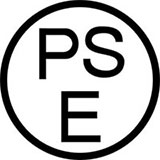
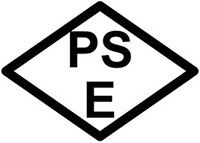
Other information
Technical information: voltage frequency AC 100V/200V, 50Hz/60Hz, plug JIS 8303
Mandatory: mandatory
Validity of certificate: 3-7 years for diamond, based on product. For round, no validity period, no certificate, only VOC can be issued
Factory inspection requirements: for diamond, only the first factory inspection is required, without annual inspection. For round, no factory inspection requirements
Requirements of the holder: for diamond, factory/importer. For round, no requirement
S-Mark voluntary certification
Introduction to Certification
S-mark is applicable to all electronic and electrical products, covering the scope of PSE certification. Recommend Class B products and applications for products not within the scope of PSE certification. Although it is voluntary certification, more and more manufacturers prefer and adopt S-Mark to gain market competitive advantage, which is similar to German GS. The S logo also covers Safety and EMC. Both JET and JQA can carry out S-Mark certification at present, and their marks are S-JET Mark and S-JQA Mark respectively.
Product scope
All electronic and electrical products
Application process
1. The customer prepares samples and materials and applies to submit them to Zhixin Testing
2. Zhixin Testing submits samples to the laboratory for testing
3. Arrange factory inspection while testing
4. The issuing authority shall review the test report and factory inspection report, and issue the S-mark certificate after passing the review
Marking requirements
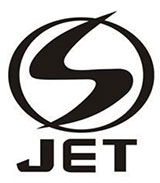
Other information
Technical information: voltage frequency AC 100V/200V, 50Hz/60Hz, plug JIS 8303
Mandatory: voluntary
Validity period of the certificate: no validity period, and the validity shall be maintained through annual review
Factory inspection requirements: first factory inspection and annual review are required
Requirements of the holder: no requirements
Japan Wireless Certification
Introduction to Certification
TELEC certification
The certification of radio frequency equipment in Japan is called Radio Equipment Type Approval. The official regulatory authority is the Ministry of Internal Affairs and Communications (MIC) of Japan. The main certification authority is the TELEC (Telecom Engineering Center) designated by the MIC. There are also 12 licensors, such as RF Technologies/JQA/SGS/ITS/TUV/UL, so it is usually also called TELEC certification, or MIC certification, RF certification.
TELEC certification is mandatory, which is similar to domestic SRRC. The certification follows the Radio Law of Japan, and the specific test specification is the Notice No. 88 regulation of MIC (Ministry of General Affairs of Japan). According to the requirements of the Radio Wave Law of Japan, the production, sale and operation of wireless equipment in Japan must comply with the technical regulations approved by MIC, and it is mandatory to apply for the type approval certificate (TELEC certification) of wireless equipment.
JATE certification
JATE certification is a mandatory certification for Japanese public network telecommunications equipment. In Japan's Telecommunications Business Law, the Ministry of Public Administration and Interior Affairs, Post and Telecommunications (MPHPT) stipulated that mandatory certification is implemented for Japanese telecommunications equipment. The telecommunications business law was established in 1985. In Article 68, MPHPT authorized qualified agencies to implement the qualification recognition of technical conditions.
MPHPT authorizes JATE (Japan Approvals Institute for Telecommunications Equipment) as a qualified agency to implement qualification recognition, so we are used to calling Japan Telecom equipment certification JATE certification. JATE approval requires that the product be affixed with a certification mark, which uses a serial number. For approved products, the applicant, product, certification number and other relevant information will be published in the government gazette and the website of JATE.
VCCI certification
VCCI is an EMC certification mark in Japan, which is managed by the Japanese Electromagnetic Control Council for Interference by Information Technology Equipment. It evaluates whether information technology products meet VCCI requirements according to CISPR 22. VCCI certification is not mandatory, but information technology products sold in Japan are generally required to undergo VCCI certification, which is a symbol of product quality. The manufacturer shall first apply to become a member of VCCI before using the VCCI logo. In order to be recognized by VCCI, the EMI test report provided must be issued by a testing agency registered and recognized by VCCI. Products that pass the VCCI standard will be allowed to attach the correct VCCI label to the product. The grade A label of the product shall indicate that the product complies with RF radiation terms, otherwise, the grade B product shall only display the basic VCCI symbol.
Product scope
TELEC certification: wireless device
JATE authentication: communication equipment
VCCI certification: IT IT equipment
Application process
1. The customer prepares samples and materials and applies to submit them to Zhixin Testing
2. Zhixin Test
3. The issuing authority shall review the test report and issue a certificate after passing the review
Label requirements
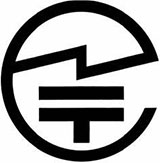
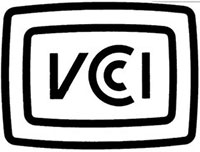
Other information
Technical information: voltage frequency AC 100V/200V, 50Hz/60Hz, plug JIS 8303
Mandatory:
-Ø TELEC certification: mandatory
-Ø JATE certification: mandatory
-Ø VCCI certification: voluntary
Certificate validity: no validity
Factory inspection requirements: no requirements
Requirements of the holder: no requirements
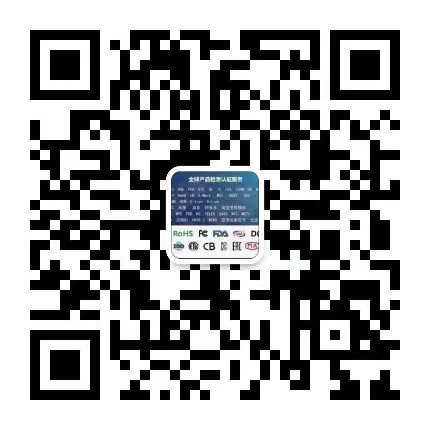

Service Hotline
18138443506
13798439478